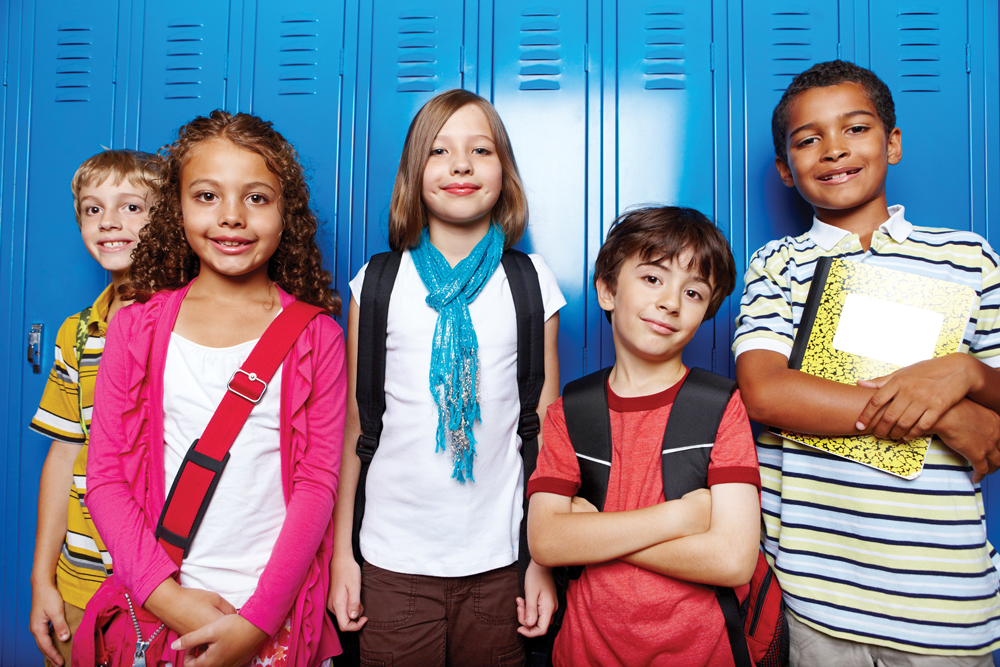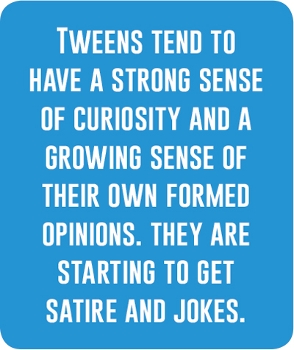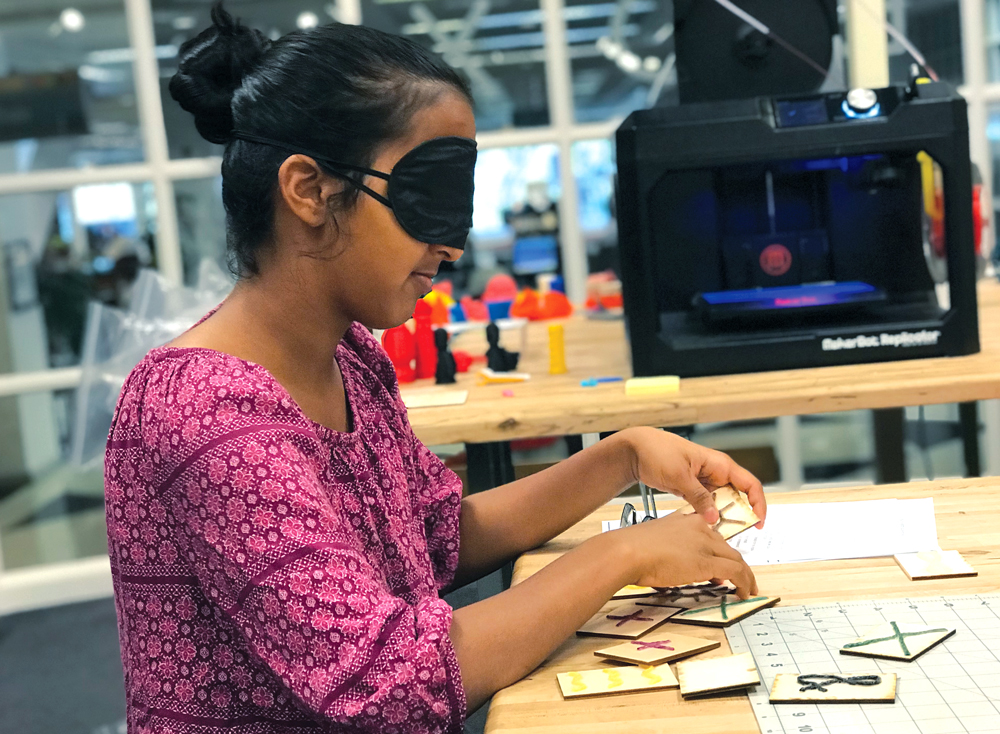Tweens Love These Libraries
These programs ignite preteens' curiosity, compassion, and quest for the next big thing.
 |
iStock/Getty Images Plus |
Over the last several years, Kerry Bailey has noticed a trend while connecting with fellow librarians to share programming ideas. “Every year, more librarians have a job title similar to mine,” says Bailey, the tween librarian for Arlington Heights (IL) Memorial Library (AHML). “The last frontier before this was teen librarian. That’s well established, but now specific programs and services for tweens are being recognized. It’s continuing to grow.”
There are more than 20 million tweens (generally considered children from eight to 12) in the United States. They’re a vital demographic for public libraries: As Bailey notes, if kids stop using the library between story hour and teen programming, it can be hard to get them back.
“Tweens are an important part of the library ecosystem,” says Megan Emery, experience designer/coordinator at the Chattanooga (TN) Public Library. While Emery praises libraries’ near-universal embrace of teen programming, “there can be a wasteland of nothing age-appropriate for [preteens],” she says. Tweens are some of her favorite patrons, Emery adds: They tend to have a strong sense of curiosity, a growing sense of their own formed opinions, and they are starting to get satire and jokes. But while they’re forging into the world as individuals, they often rely on others to reach the library.
 Finding the next big thing
Finding the next big thing
“Like any relationship, this takes work,” writes Pamela Groseclose, a youth services librarian at Missouri’s Springfield-Greene County Library District. “To have successful programming, you must know your audience.”
Groseclose says her first tween programs were on the generic side, such as a monthly book club event. “We found we were not relevant to our tweens. So we talked [to them] and did research.” After their input, she created events such as fanfiction writing, a Percy Jackson book club, and a sing-along to the Disney Channel movie Descendants.
At the Glen Ellyn (IL) Public Library, youth technology librarian Christina Keasler runs tween-specific programs that range from 3-D printing to how to make fake blood to a library version of The Amazing Race, where children learn about world cultures while completing challenges such as drawing the Mona Lisa in one minute or creating an origami crane in even less time.
“Tweens balance between the desire for individuality [and] wanting to fit in,” says Keasler. “It’s a conflicting time. It’s a weird seesaw of self-discovery. That, and Fortnite.”
Librarians need regular contact with tweens to keep up to date on their likes and interests, Keasler advises. She formalizes her process by meeting with a middle school advisory board that keeps her in regular contact with tweens and gives her a sense of what the school library in her area is doing.
Bailey uses the same idea but less formally, running five to six ideas past a tween library advisory group. “That’s how I pick my programs,” she says. “When I go with something they’ve suggested, they feel invested. They attend and bring friends.”
Still, tween passions can vary by group—or neighborhood. Keasler notes that programs which bombed for her, such as open mic night or fanfiction groups, do well in a library that is less than 20 miles from her location. “The challenge is finding the next big thing,” she says.
For instance, when Keasler noticed the bottle-flipping trend growing on YouTube, she asked some tweens, “Do you want to flip water bottles and not get yelled at by an adult?” Instant program.
That sort of flexibility can be key to serving this age group well. While not all programs can be whipped up in a day or even a week, such initiatives are often what capture the zeitgeist of middle schoolers.
“Any time you’re trying to force the issue, you set yourself up for failure,” Emery says. “If it sounds like a teachable moment or preachy, we’ll [fail].” Emery creates “pop-up events,” such as making lip gloss or working with snap circuits, that can be used anytime there’s a group of tweens in her library looking for action.
Hands-on activities are usually a hit, especially when kids have an actual item they’ve created by the end of the program. Making slime continues to be a huge draw for this age group—and so are old-fashioned crafts such as sewing.
“Our tweens like do-it-yourself sewing by hand or machine. They like to take pieces of scraps and make something,” says Dawn Abron, creative learning space and teen services supervisor at Illinois’s Zion-Benton Public Library. In her experience, getting both boys and girls to attend programs isn’t hard, even if the event seems geared to one or the other. When Abron set up an event to make a sleep mask, lots of boys showed up. (One of Bailey’s programs on nail art, however, didn’t attract any boys.) Programs with tech naturally attract boys and girls, librarians say, despite the perception by some that boys like tech and gaming more than girls.
 |
A young patron plays a tactile matching game as part of a program to develop braille books at the library.Photos courtesy of Charlotte Mecklenburg Library |
Service initiatives
While tweens are open to such programs that include charity or humanitarianism, these events must be carefully thought out. “They are still very much developing their empathy skills,” says Bailey, “but our hands-on service projects allow them to see their impact on others in a very tangible way.…I challenge them to think beyond themselves and their own interests.”
Kiara Garrett had a solid slate of programs for teenagers, including service-oriented initiatives, at North Carolina’s Charlotte Mecklenburg Library (CML), where she is teen services specialist—but not much for middle schoolers. Garrett decided to drop the age requirement and let tweens join everything. “I thought, ‘Why not?’ There was nothing to change, and we got a lot more kids.”
Among other initiatives, tweens at her library are learning how to translate words into braille to make books through the Build a Better Book project, a library makerspace initiative at the University of Colorado Boulder. CML Library staff trained there and returned with a “suitcase full of materials” that kids used to make books for learners with visual impairments, Garrett says. Tweens also made bandannas they can donate to the ASPCA, Garrett adds.
Children in Arlington Heights make care packages for military members that include snacks, personal care items, and handwritten postcards. They also make “no-sew” fleece blankets for Project Linus, creating security blankets for children in need. “It makes [the program] so real,” says Bailey. “They can say, ‘I finished this, and this will help someone.’ It is one of our favorite activities because two or three tweens can work together on one blanket and socialize while they complete the project.” The library provides the fleece, Bailey adds.
Tweens had a hand in developing a ComiCon-style ImagiCon event at Charlotte Mecklenburg Library. |
Leveraging large programs
Being able to pivot on trends helps, but carefully planned, large-scale tween events can be highly rewarding—especially when tweens are involved in planning and parents attend. Emery became “obsessed” with organizing an involved tween program when a pair of girls told her they wanted to create an event at the library in order to earn a silver award in their Girl Scout troop. The girls’ theme was self-defense, and Emery helped them extend their original idea into a half-day program at the library. The final event offered everything from self-defense with martial arts to safe online shopping tips to a presentation by a local police officer on how to consider personal safety in different types of locations. The girls each led a session, and Emery helped them contact the police to set up that talk.
“It was a great success,” Emery says. “People learned a lot without leaving feeling scared about the world around them.” Forty-five people attended, and Emery and the scouts are discussing how to share the program nationally to help both Girl Scouts and libraries that want to replicate it.
One of the best reasons to run large-scale programs is to partner with various organizations, she says. “We don’t have to be the experts; we can involve the experts.”
Emery also runs a filmmaking course for tweens that runs over several weeks, during which kids brainstorm and write scripts for short films. They then trade scripts with a nearby library, and each group makes movies from the material they received. The whole event ends with a viewing party for everyone involved—bringing together the different groups of kids in a social event.
Each year, Keasler runs a summer-long raffle of a big-ticket item such as a drone or a guitar and lessons. When she meets with her tween advisers, they not only guide her decisions, but help “hype up what I’m talking about,” she says.
Consulting with middle schoolers helped Garrett turn a perfectly fine Halloween event into a blockbuster ImagiCon for her area three years ago. The ComicCon-inspired program, featuring games, panels, and activities related to comic books, graphic novels, and anime, draws cosplayers of all ages. While the first ImagiCon did well, attracting 200 participants, the number jumped to 1,000 and then 2,000 in subsequent years, forcing Garrett to find a larger space. “It was a big draw for kids we didn’t see regularly,” she says. “They would come and say, ‘Oh, I didn’t know the library did this.’” It takes about six months to plan and costs $500, she adds.
Getting different groups of students together, and drawing children out of solitary pursuits such as gaming at home, are happy by-products of robust events. Bailey says that the Arlington Heights area has a sizable Spanish-speaking population, and AHML has recently started creating bilingual programs to attract these residents. She counts her biggest successes as programs that can bring different groups of tweens into her library as she watches them bond over a shared interest. Seeing students create new friendships helps ensure that she meets her ultimate goal, she says. “I just want to build lifelong library users.”
Freelance journalist Wayne D’Orio has covered education nationally for more than 10 years.
RELATED
The job outlook in 2030: Librarians will be in demand
The job outlook in 2030: Librarians will be in demand
ALREADY A SUBSCRIBER? LOG IN
We are currently offering this content for free. Sign up now to activate your personal profile, where you can save articles for future viewing






Add Comment :-
Be the first reader to comment.
Comment Policy:
Comment should not be empty !!!